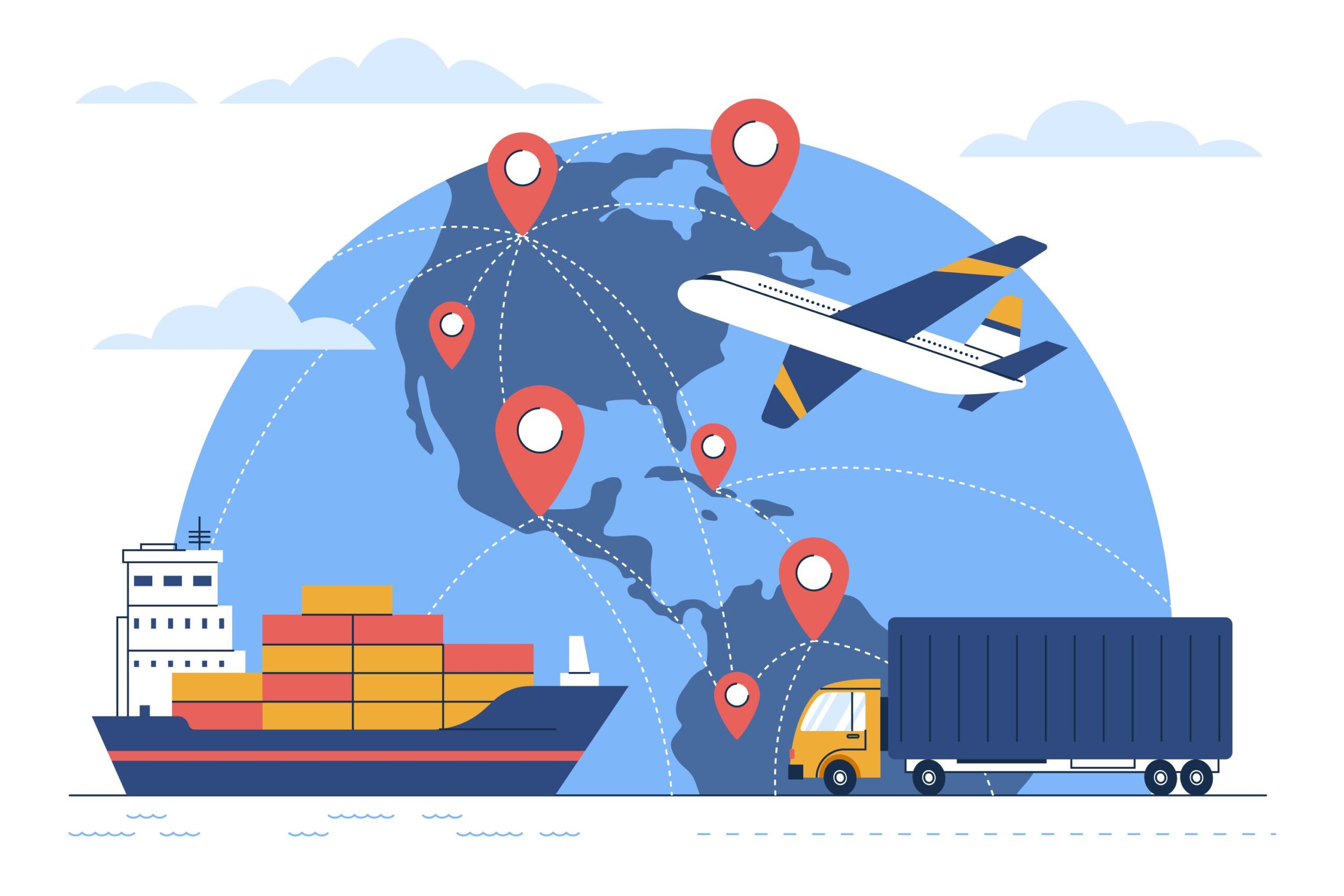I. Introduction:
Freight forwarding is a crucial part of the global trade industry. It involves the transportation of goods from one place to another, and it requires a lot of coordination and organization. Freight forwarding software and Track and Trace Software are revolutionizing the way the freight industry operates, making processes more efficient and cost-effective. This article will discuss how freight forwarding software and Track and Trace Software are dominating the freight industry and how these can benefit businesses.
II. What is Freight Forwarding Software?
Freight forwarding software is a computerized system that helps to manage the process of shipping goods from one place to another. It automates many of the tasks associated with freight forwarding, such as tracking shipments, creating invoices, and managing customer relations. The software can also be used to track the progress of shipments, ensuring that they arrive on time and in the condition in which they were sent.
III. Benefits of Freight Forwarding Software:
Freight forwarding software has many benefits for businesses. It can help to reduce costs by automating many of the manual tasks associated with freight forwarding. It also makes it easier to track shipments and manage customer relations. The software can also be used to monitor the progress of shipments, ensuring that they arrive on time and in the condition they were sent. Additionally, the software can be used to generate reports and analyze data, helping businesses to make more informed decisions.
Now in the following, we will discuss some more benefits of Freight Forwarding Software:
⦿ Shipment Management: Freight forwarding software helps in creating and managing shipments. It allows users to input shipment details, including origin, destination, type of cargo, and other relevant information.
⦿ Booking and Reservations: Users can book cargo space with carriers, airlines, or shipping lines through the software. It helps in securing space and managing bookings efficiently.
⦿ Documentation: The software generates and manages essential shipping documents such as bills of lading, customs declarations, invoices, and other required paperwork. This helps in ensuring compliance with regulatory requirements.
⦿Tracking and Visibility: Freight forwarding software often includes tracking features that provide real-time visibility into the status and location of shipments. This helps in monitoring cargo in transit and providing updates to clients.
⦿ Carrier and Rate Management: Users can maintain a database of carriers, negotiate rates, and compare shipping rates to find the most cost-effective options for their clients.
⦿ Customs Compliance: Freight forwarding software can assist with customs compliance by automating customs documentation and ensuring that shipments adhere to import/export regulations.
⦿ Inventory Management: Some software solutions offer inventory management features, allowing users to track and manage the stock of goods in warehouses or distribution centers.
⦿ Reporting and Analytics: Users can generate reports and analyze data related to their shipping and logistics operations, helping them make informed decisions and optimize their processes.
⦿ Integration: Many freight forwarding software solutions offer integration capabilities with other systems, such as accounting software, CRM systems, or e-commerce platforms, to facilitate a seamless flow of data and information.
⦿ Customer Relationship Management (CRM): Some software solutions include CRM features to manage client relationships, track communication, and provide better customer service.
⦿ Financial Management: Freight forwarding software may include financial modules for managing billing, invoicing, and tracking payments.
⦿ Mobile Accessibility: Some modern freight forwarding software offers mobile apps or web-based platforms that allow users to access and manage their operations from anywhere with an internet connection.
IV. What is Track and Trace Software:
Track and trace software is a type of freight forwarding software that helps businesses to monitor the progress of their shipments. It provides real-time tracking information so that businesses can keep track of their shipments and ensure that they arrive on time and in the condition they were sent. The software can also be used to generate reports and analyze data, helping businesses to make more informed decisions.
V. Benefits of Freight Forwarding Software:
Track and trace software provides significant benefits by enhancing supply chain visibility and operational efficiency. It enables real-time monitoring of shipments, reducing the risk of loss or theft, while also improving customer satisfaction through accurate and timely updates. This software streamlines inventory management, optimizes routes, and automates tracking tasks, ultimately leading to cost reductions and improved resource allocation. By offering proactive issue resolution and compliance support, track and trace software helps organizations mitigate risks, improve decision-making, and maintain a competitive edge in the logistics and supply chain industry.
Here are some other benefits of Track and Trace Software:
⦿ Enhanced Visibility: Provides real-time visibility into the location and status of shipments, improving transparency and reducing the risk of loss or theft.
⦿ Improved Customer Service: Enables accurate and timely updates for customers regarding their shipments, leading to better customer satisfaction.
⦿ Inventory Management: Helps maintain accurate inventory levels by tracking the movement of goods, reducing overstocking or understocking issues.
⦿ Increased Security: Helps deter theft and unauthorized access to shipments by monitoring their movements and providing alerts for any deviations from the planned route.
⦿ Efficiency and Productivity: Streamlines operations by automating tracking tasks, reducing manual data entry, and freeing up staff for more value-added activities.
⦿ Proactive Issue Resolution: Identifies and addresses issues such as delays or disruptions in real time, allowing for quicker problem resolution.
⦿ Compliance and Accountability: Assists in compliance with regulatory requirements by maintaining a digital record of shipment movements and documentation.
⦿ Cost Reduction: Optimizes routes and resource allocation, reducing fuel costs and operational expenses.
⦿ Data Analytics: Provides valuable data for analyzing historical shipment data and making informed decisions to optimize logistics processes.
⦿ Competitive Advantage: Differentiates logistics providers by offering advanced tracking capabilities, which can be a selling point for customers seeking reliable shipping services.
⦿ Sustainability: Supports sustainability efforts by optimizing routes and reducing unnecessary emissions, contributing to greener supply chain practices.
⦿ Risk Mitigation: Minimizes the risk of loss or damage to high-value or sensitive shipments by monitoring them closely and providing early warnings of potential issues.
VI. Freight Forwarding Software Vs. Track and Trace Software:
When it comes to managing your freight and logistics operations, you have two main options: freight forwarding software and track and trace software. Both of these solutions can help you streamline your operations and make them more efficient, but they have different functions and features.
Freight forwarding software is designed to help you manage the entire process of shipping goods from one location to another. It can help you track shipments, manage inventory, and even provide customer service. It can also help you manage customs clearance and other paperwork associated with international shipping.
Track and trace software, on the other hand, is designed to help you monitor the progress of your shipments. It can provide you with real-time updates on the location of your shipments, as well as provide you with detailed reports on the status of your shipments. This can help you ensure that your shipments are delivered on time and in the right condition.
So, which one should you choose? It really depends on your specific needs. If you need to manage the entire process of shipping goods from one location to another, then freight forwarding software is the way to go. However, if you just need to track and trace shipments, then track and trace software is the better option. Whichever you choose, you can be sure that it will help you streamline your operations and make them more efficient.
VII. Conclusion:
Freight forwarding software and Track and Trace Software both has many benefits for businesses, such as reducing costs, tracking shipments, and managing customer relations. Additionally, these softwares can be used to generate reports and analyze data, helping businesses to make more informed decisions. It is clear that freight forwarding software and Track and Trace Software dominating the freight industry, and it will continue to do so in the future.











